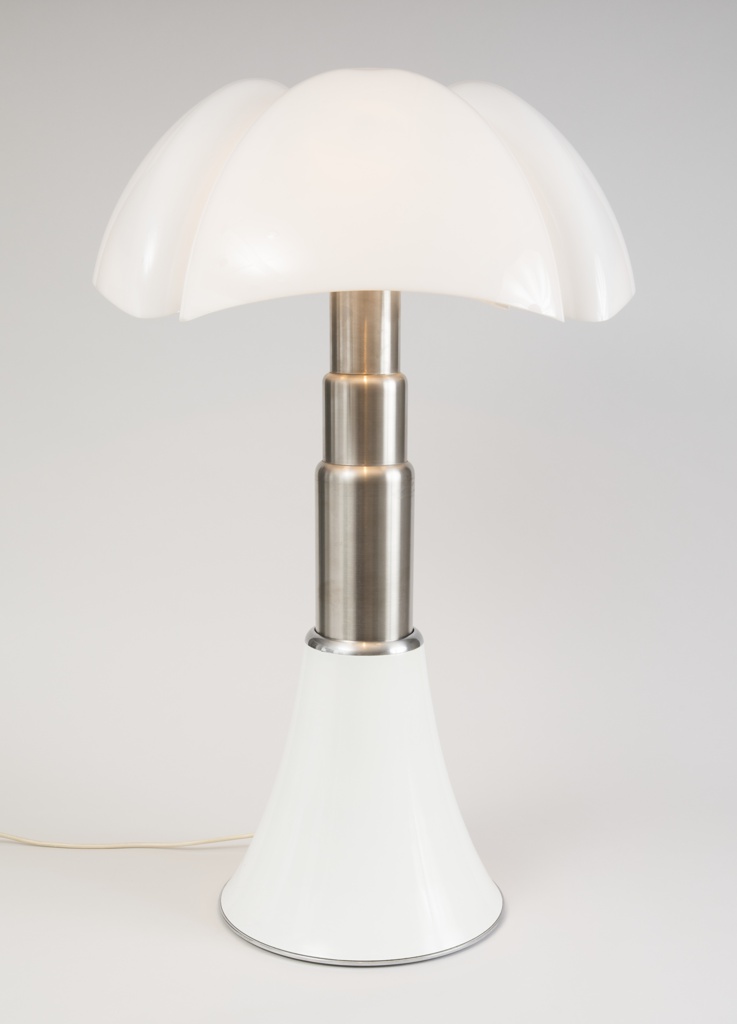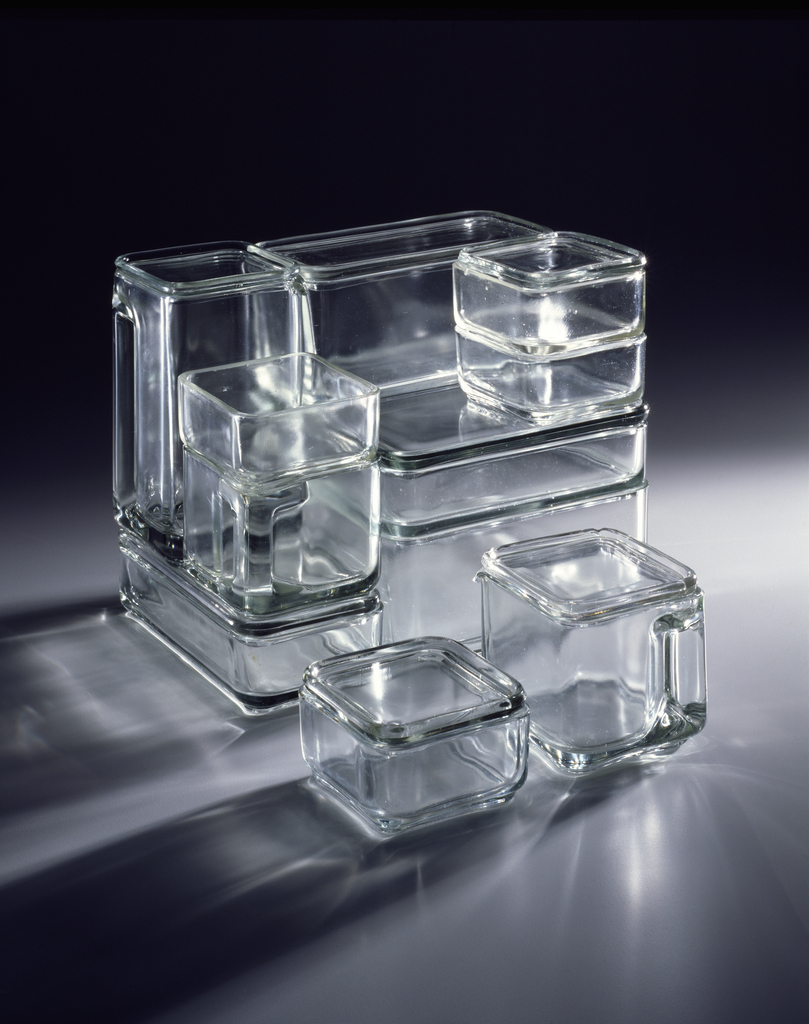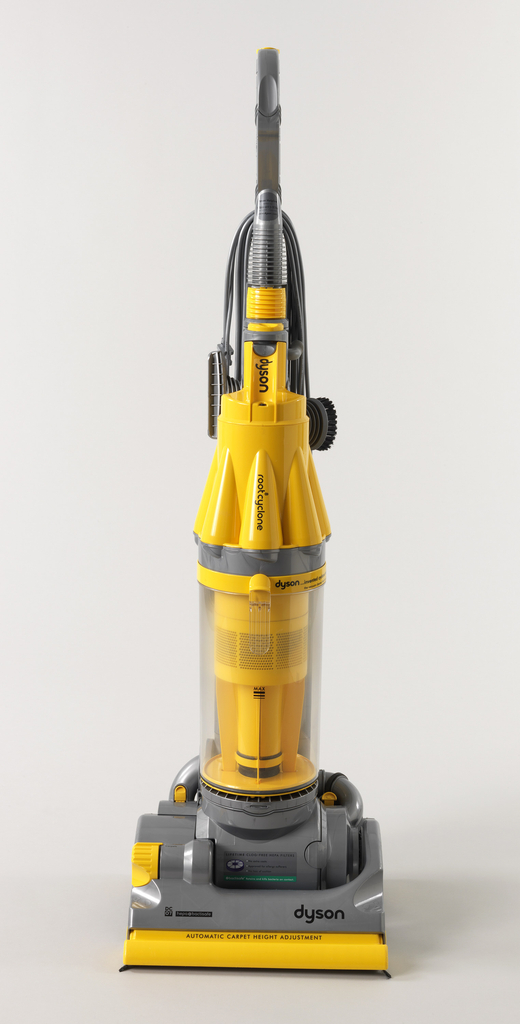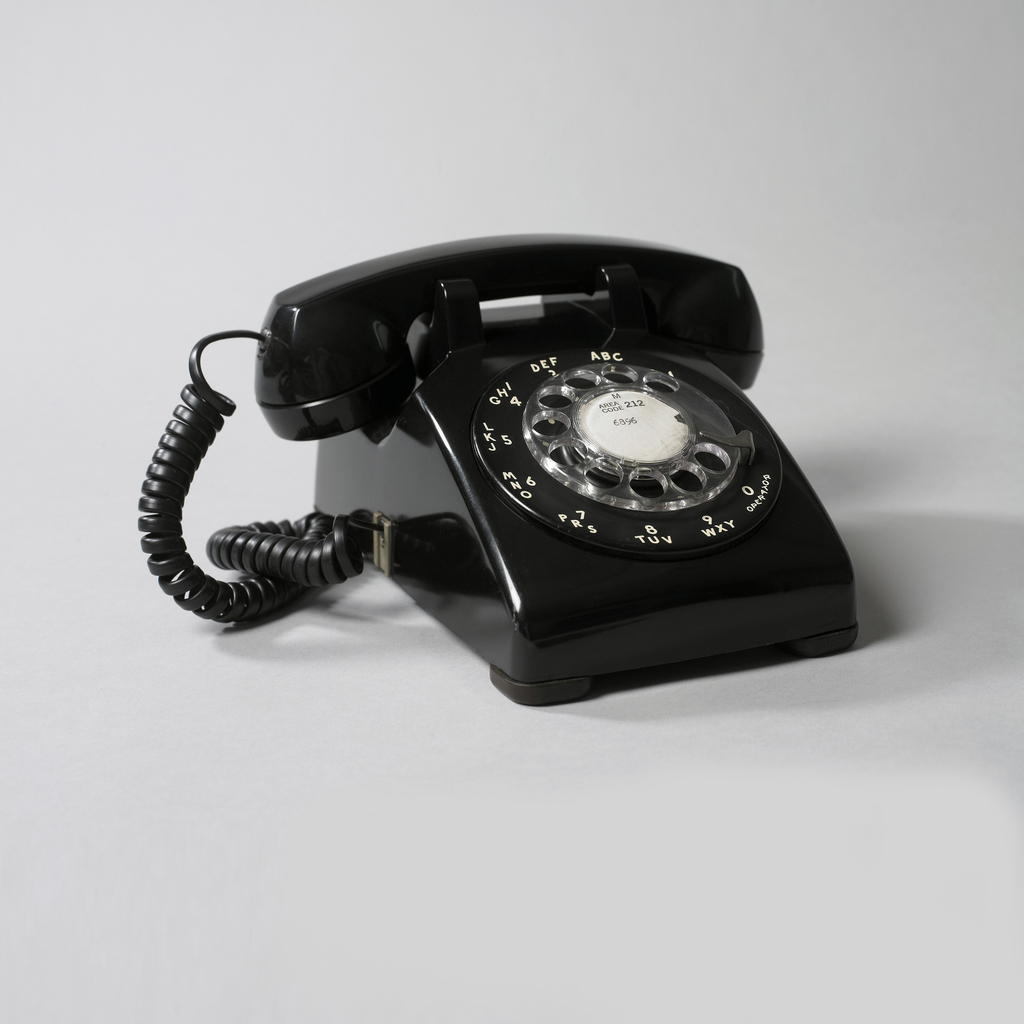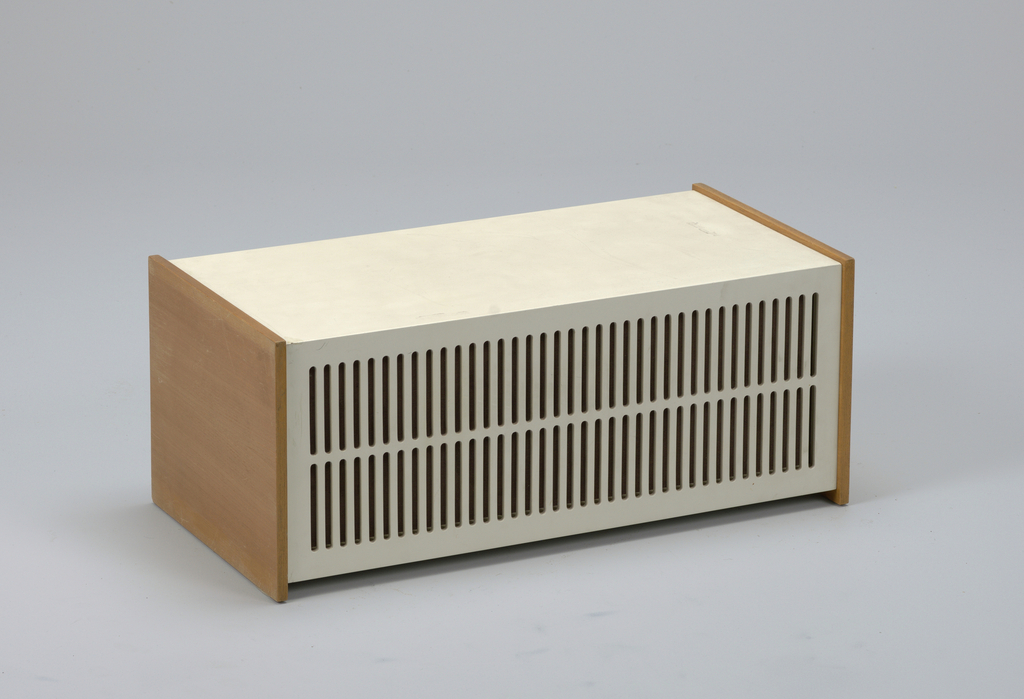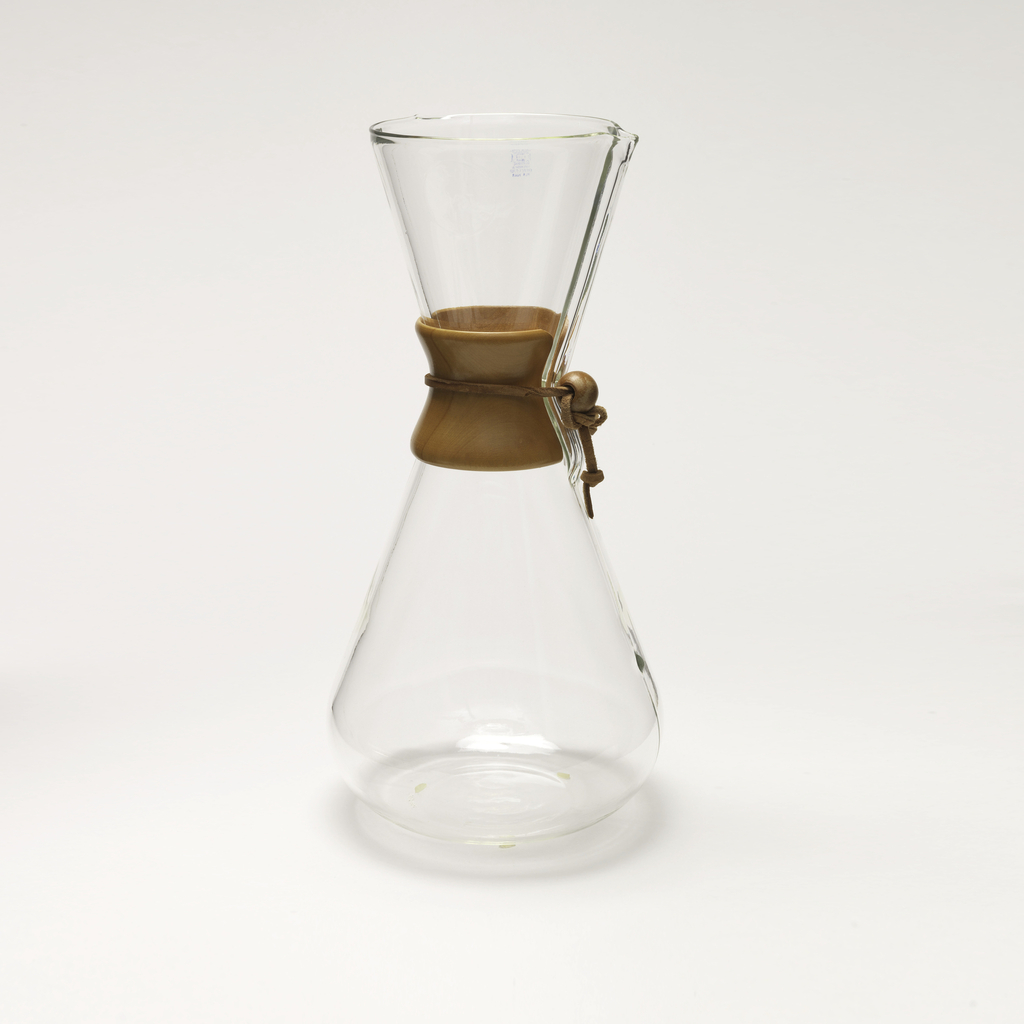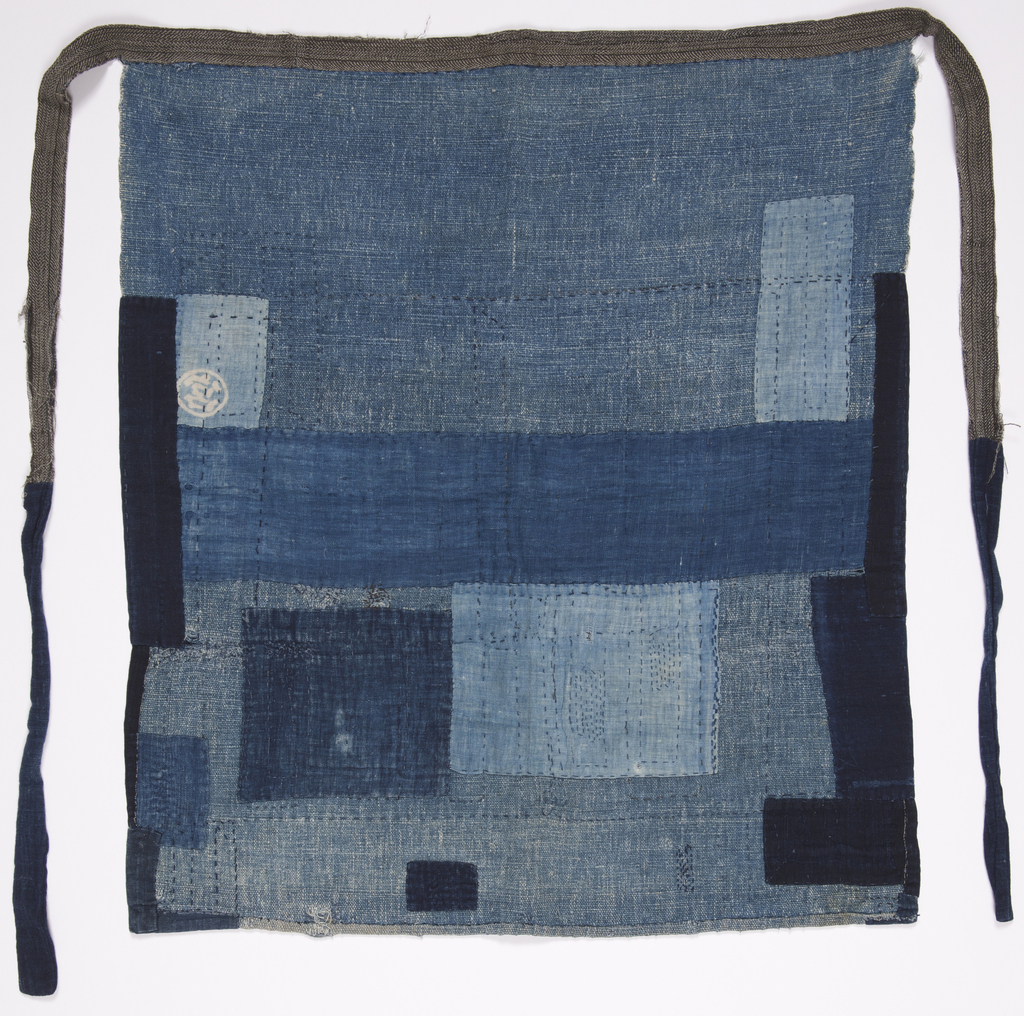By the 1960s, it could be argued that lighting design had come of age. This was influenced by several factors—booming post-war economic growth, the emergence of a new youth market eager to challenge established ideas about modern style, and the continuing development of lighting technologies and new plastics that encouraged greater experimentation with form and...
Author: Zenia Malmer The ‘Kubus’ clear glass stacking and modular storage system was created in 1938 by German designer Wilhelm Wagenfeld (1900-90), who frequented the Bauhaus school in the former Weimar Republic. Kubus, which was manufactured by Lausitzer Glasverein, was one of Wagenfeld’s most well-known affordable designs in pressed glass that he created for commercial...
To celebrate the opening of Saturated: The Allure and Science of Color (May 11, 2018-January 13, 2019), Object of the Day this month will feature colorful objects from the exhibition. This post was originally published on May 1, 2013. For many of us, a glance at everyday appliances elicits a wince or a groan: they’re dull looking,...
In celebration of our new exhibition, The Senses: Design Beyond Vision, this Object of the Day post explores the multisensory experience of an object in Cooper Hewitt’s permanent collection. Today’s blog post was written by Cynthia Trope and originally published on March 7, 2013. If you grew up in America in the mid-1950s – 1980s, you no doubt...
In celebration of our new exhibition The Senses: Design Beyond Vision, this Object of the Day post explores the multisensory experience of an object in Cooper Hewitt’s permanent collection. Dieter Rams, Chief Design Officer for German consumer products manufacturer Braun AG from 1961-95, designed the neutral and unassuming L1 speaker in 1957. Influenced by Braun’s...
This coffee maker was devised by chemist and inventor, Dr. Peter Schlumbohm, for the Chemex® Corporation. It is made of heat-resistant non-porous borosilicate glass, and surrounded by a wood collar tied with a leather thong, that serves as an insulated handle with which to pour the hot beverage. The ingenious use of glass allows the...
You might think that this pitcher looks a bit like crushed ice, and perhaps the illusion is intended. This isn’t just any old pitcher, but a champagne pitcher, and it is special because of its so-called “bladder.” Within the body of the vessel, underneath the handle, is a cavity in which ice can be inserted,...
In pre-industrial Japan, aprons were a basic element of everyday dress, worn by children and adults to protect one’s clothing, which was infrequently cleaned. Some form of apron was worn by workers of all sorts, from shop-keeping to field work to fishing. Like other work clothes, aprons were often made of repurposed cloth, as this...
Many southwest Chinese ethnic groups, especially the Miao, are known for their spectacular embroidery. Traditionally women’s work, embroidery was a Miao girl’s first attempt at needlework starting as early as four or five years old. Watching their mothers and other women in the community weave and embroider, they would later pass on this knowledge to...
